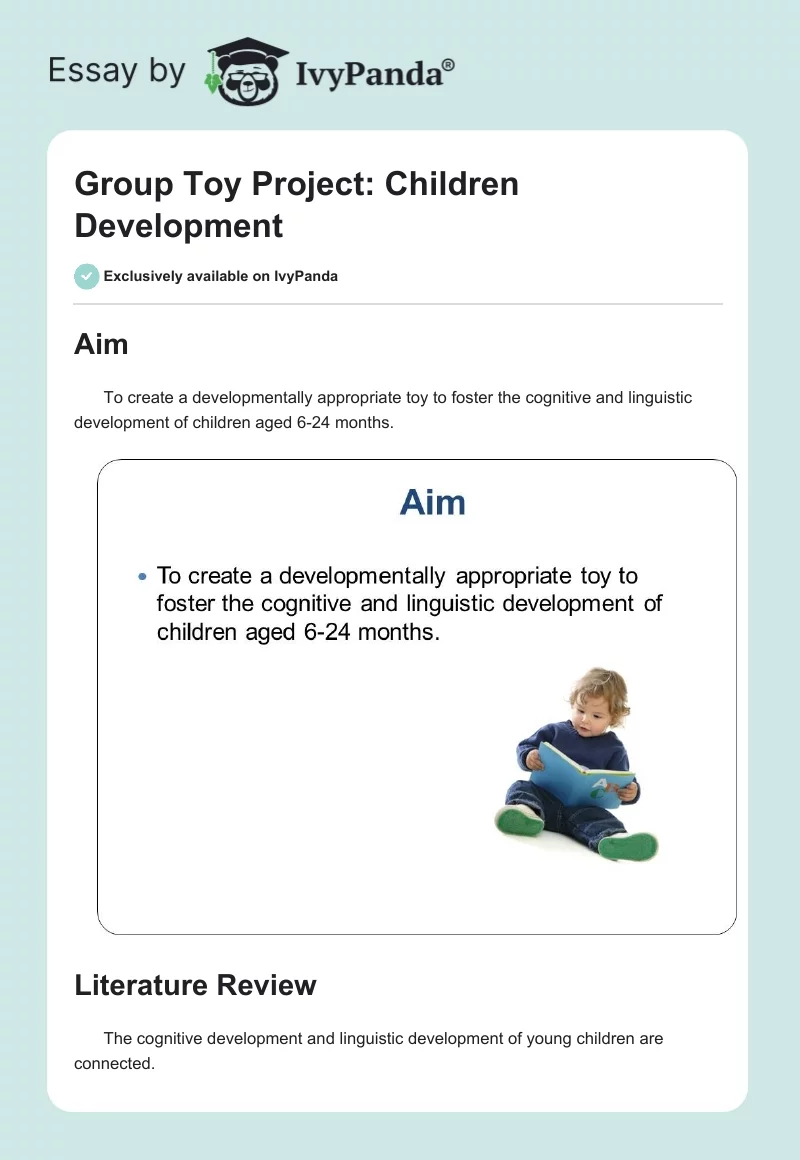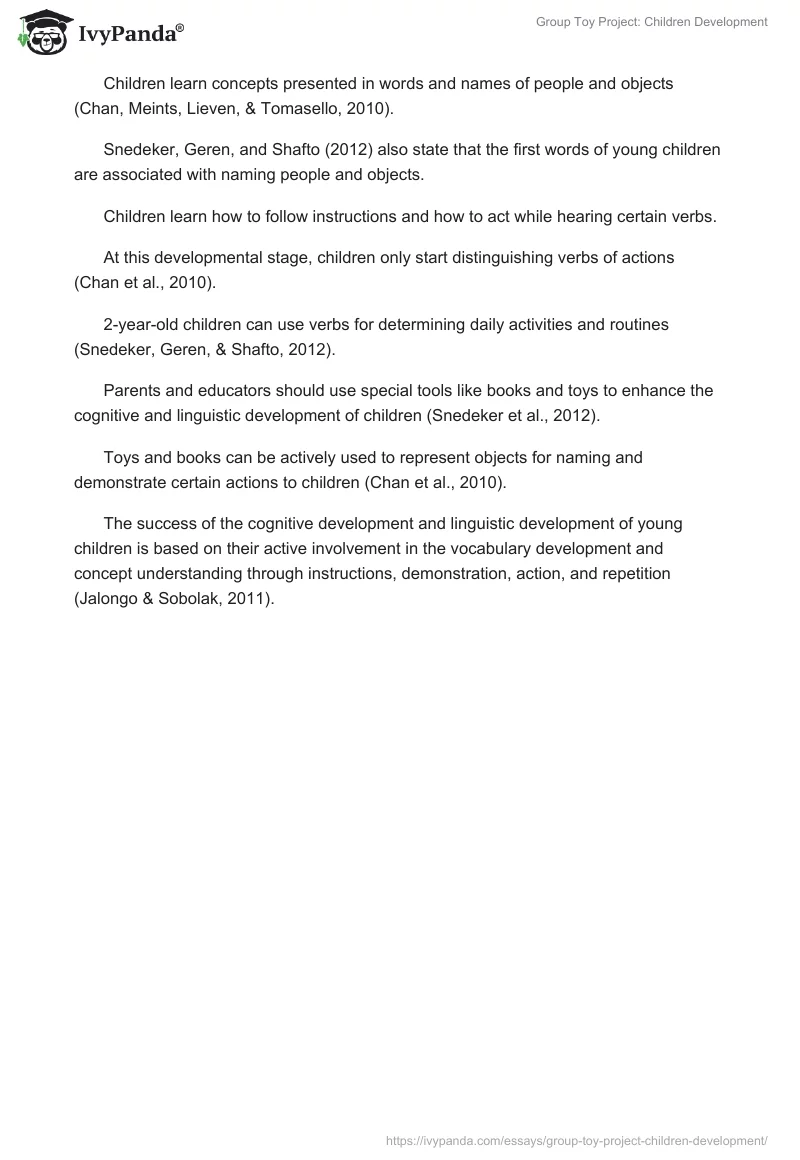Aim
To create a developmentally appropriate toy to foster the cognitive and linguistic development of children aged 6-24 months.
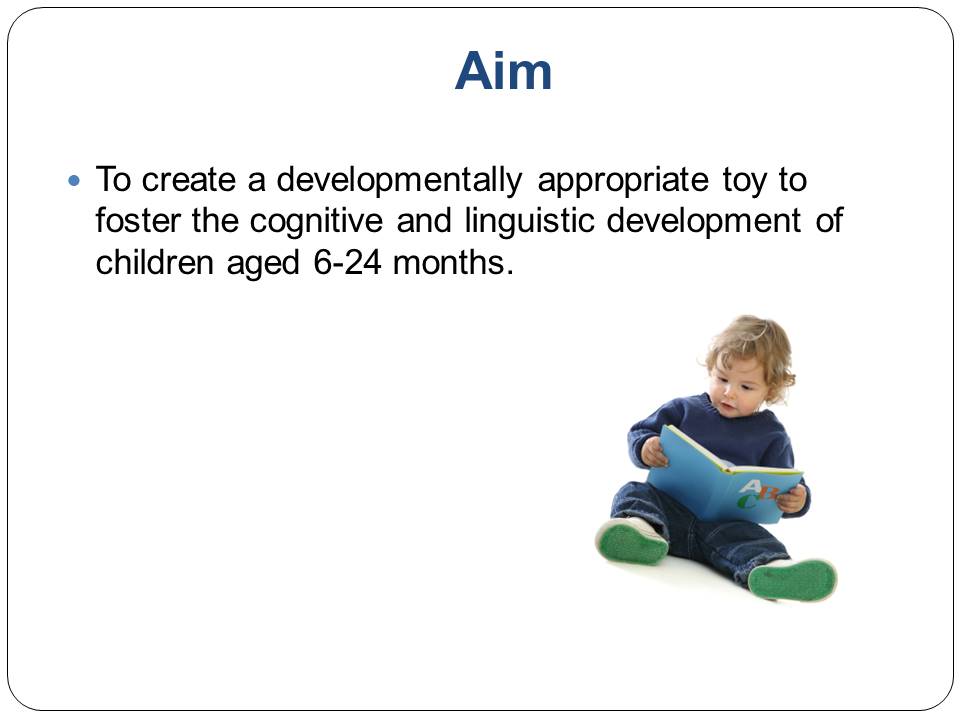
Literature Review
The cognitive development and linguistic development of young children are connected.
Children learn concepts presented in words and names of people and objects (Chan, Meints, Lieven, & Tomasello, 2010).
Snedeker, Geren, and Shafto (2012) also state that the first words of young children are associated with naming people and objects.
Children learn how to follow instructions and how to act while hearing certain verbs.
At this developmental stage, children only start distinguishing verbs of actions (Chan et al., 2010).
2-year-old children can use verbs for determining daily activities and routines (Snedeker, Geren, & Shafto, 2012).
Parents and educators should use special tools like books and toys to enhance the cognitive and linguistic development of children (Snedeker et al., 2012).
Toys and books can be actively used to represent objects for naming and demonstrate certain actions to children (Chan et al., 2010).
The success of the cognitive development and linguistic development of young children is based on their active involvement in the vocabulary development and concept understanding through instructions, demonstration, action, and repetition (Jalongo & Sobolak, 2011).
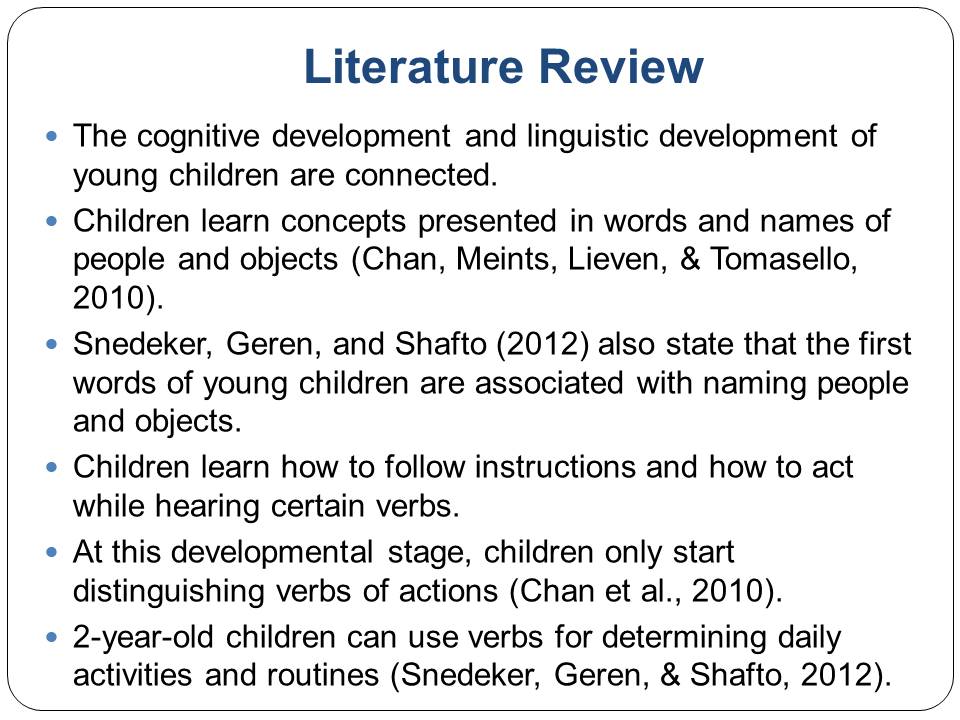
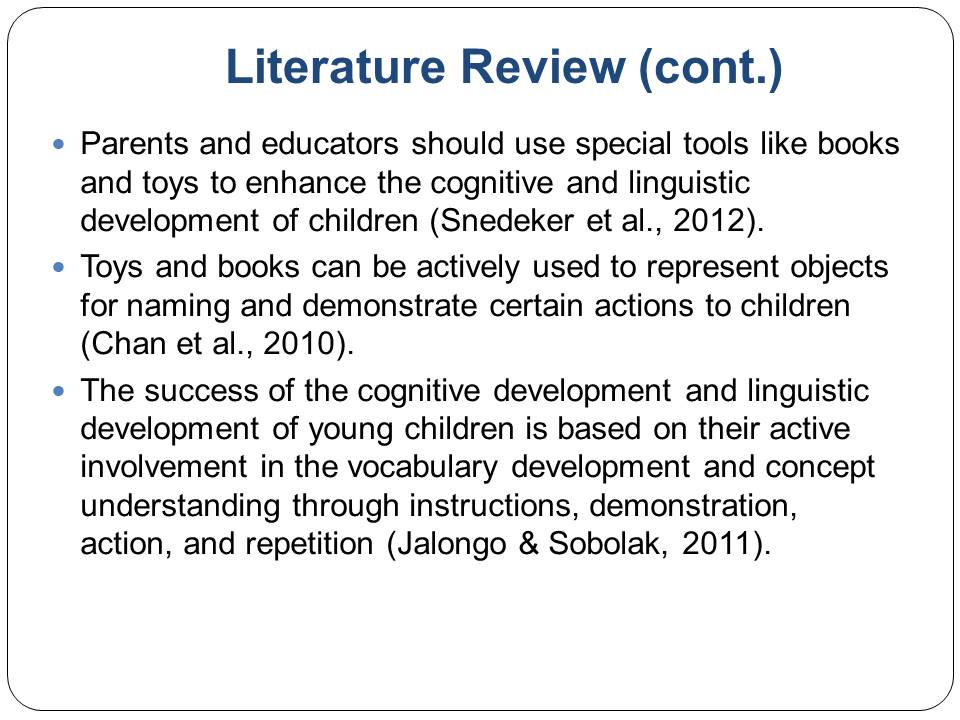
Description of Toy
- The proposed novel toy is a board book with moving, felt, soft parts, and vivid illustrations to allow children to play with it.
- Book title: Time to Play
- Book size: 12×6 inches
- Material: Cardboard, felt, and soft material
- Pages: 10 pages
- Number of moving figures: 6
- Number of pictures to touch: 4
- The book includes images of animals and objects (rainbow, ball, square, and others).
- Each book spread includes depictions of objects and verbs representing actions.
- A child is expected to introduce oneself and name an object.
- A child is expected to imitate the sound produced by an animal.
- Each book spread includes moving parts cut out of the cardboard to imitate actions and soft parts to touch.
- A child is expected to touch the picture, imitate actions or movements.
- Each book spread includes moving parts cut out of the cardboard that hide other pictures or objects.
- A child is expected to move parts and name objects.
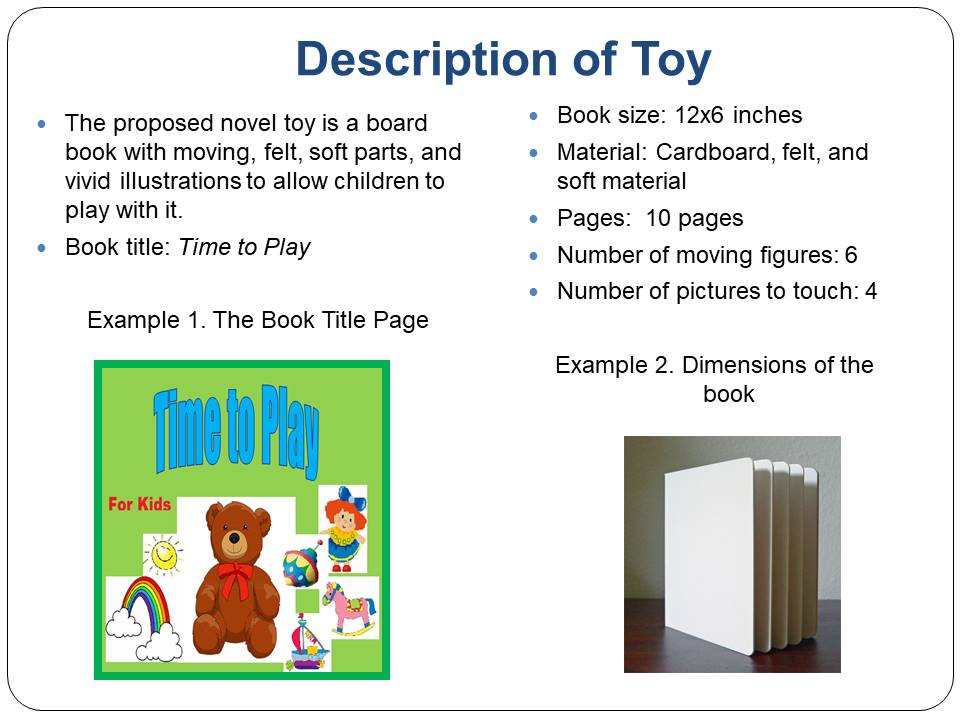

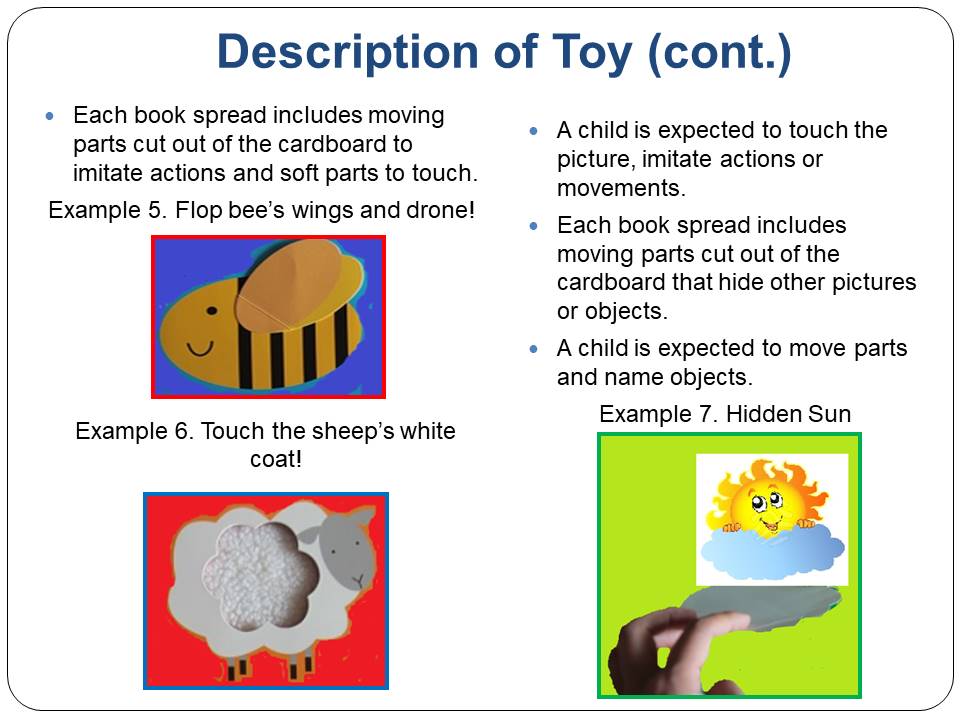
Toy Function
Linguistic Development
- At this developmental stage, children learn to point to named pictures.
- The book allows parents to name objects for children to imitate.
- A child can learn new nouns such as names of animals and natural objects.
- The book enhances the linguistic development providing verbs supported with stable and moving pictures.
- A child learns to point to objects in a book without the parents’ help.
Cognitive Development
- The book enhances the cognitive development allowing children to follow easy instructions read by parents (“Flop bee’s wings and drone!”).
- At this stage, children learn how to finds hidden things, and the moving pictures develop this skills.
- Colorful pictures (for example, rainbow) can be used to teach how to sort colors.

Subjects
- Target Gender: Male and female.
- Age: 6-24 months.
- Books should be used while playing with parents or caregivers.
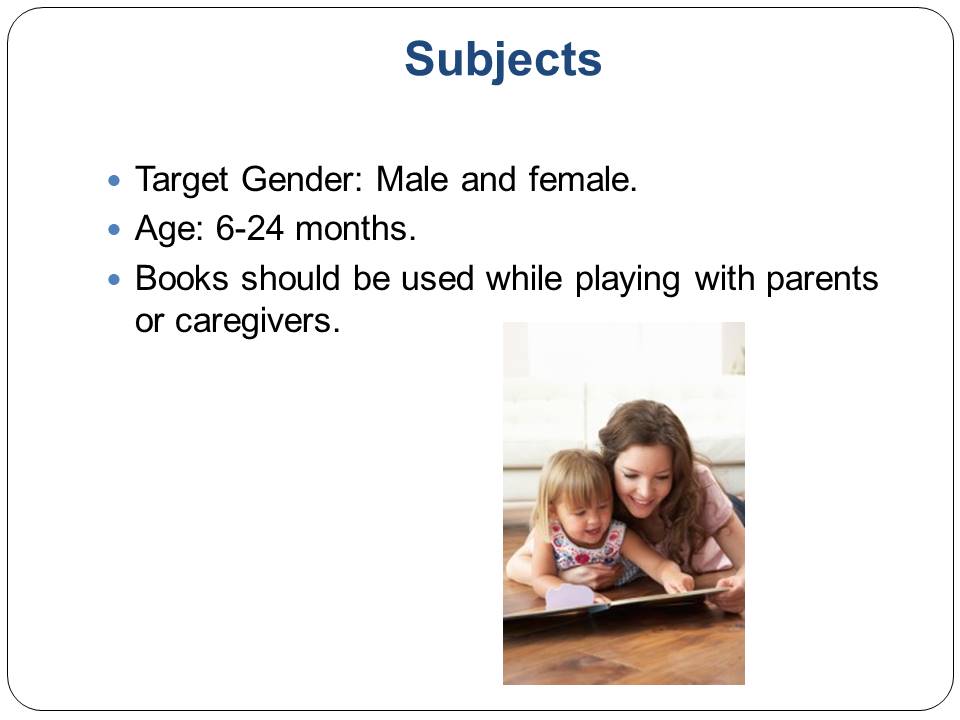
Need for Toy
The toy market needs a book that combines the elements effective to foster both cognitive and linguistic development of young hildren.
At this stage, the cognitive and linguistic development is based on the sensory and movement development.
Elements in this book allow the cognitive and linguistic development while touching, moving, and manipulating objects.
The book provides the complex base for the cognitive and linguistic development without the necessity of using additional materials to learn names of natural objects, sounds, verbs, and colors.
Tools for the cognitive and linguistic development are combined in this book.
A child learns how to follow instructions after learning nouns and verbs.
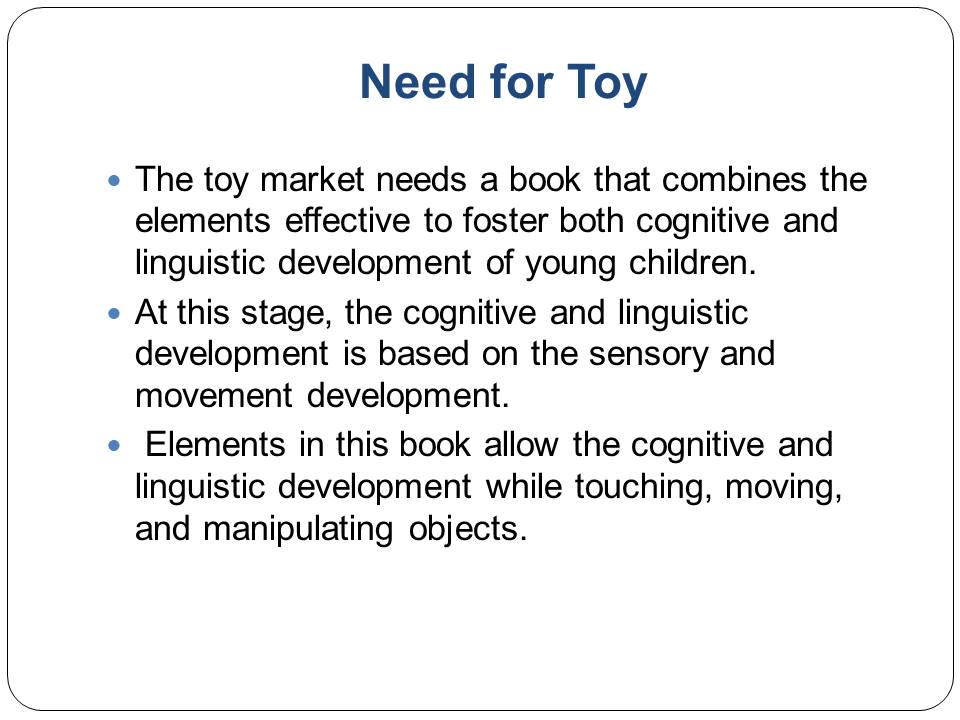
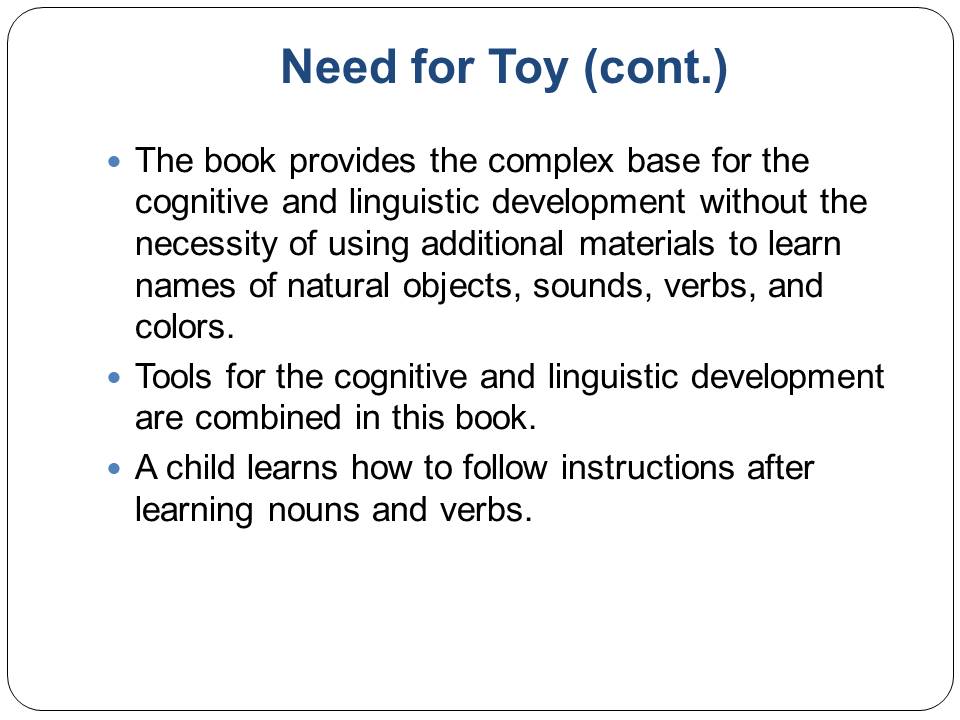
Possible Bias
- Children with physical disabilities can experience difficulties while moving the parts of the book.
- Modifications:
- Moving parts can be changed with illustrations.
- Moving parts of the book can be made of the elastic material to change the form and move with an easy touch.
- Modifications:
- Colorblind children can experience difficulties while recognizing colors on pictures.
- Modifications:
- The focus in the book should be on primary colors generally recognized by colorblind children.
- Modifications:
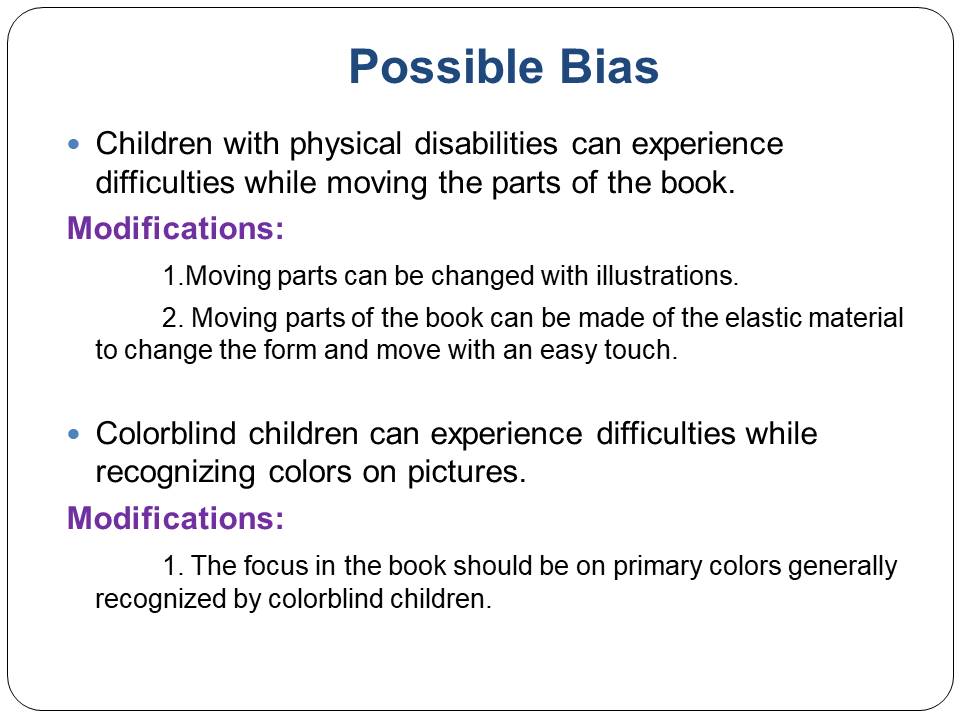
Conclusion
The proposed book is designed to foster the young children’s cognitive and linguistic behavior.
The book allows children to receive the new knowledge based on their sensory feelings developed earlier.
Children can learn new sounds, nouns, and verbs while touching and moving the parts of the book and following instructions that are easy to understand.
The future toy improvement involves the addition of more pages, moving figures and pictures for touching. It is possible to add more animals and verbs determining their activities.
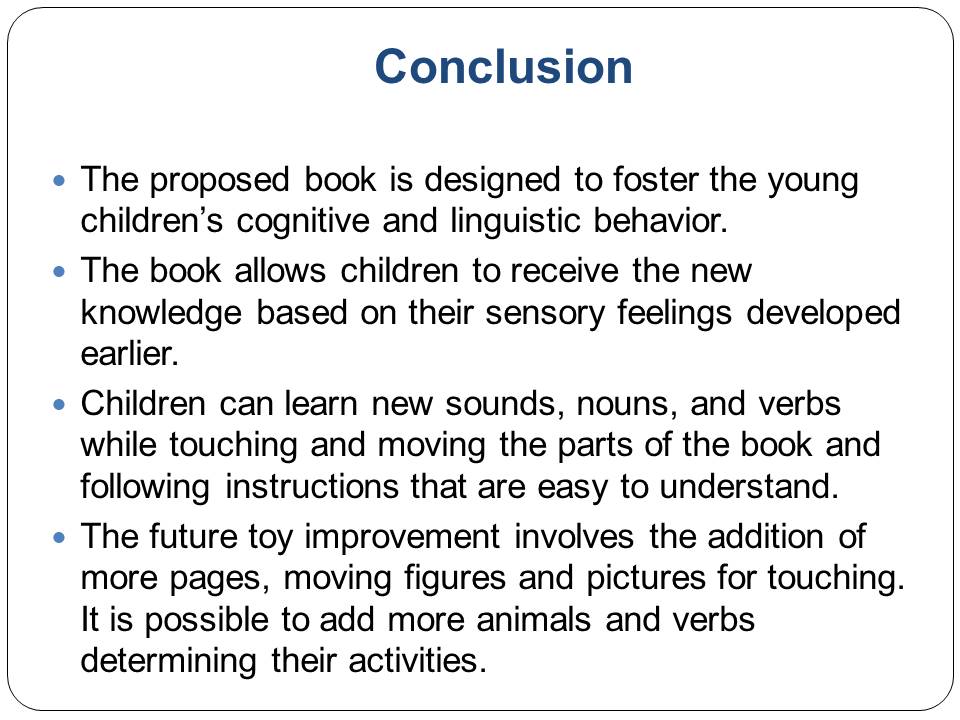
References
Chan, A., Meints, K., Lieven, E., & Tomasello, M. (2010). Young children’s comprehension of English SVO word order revisited: Testing the same children in act-out and intermodal preferential looking tasks. CognitiveDevelopment, 25(1), 30-45.
Jalongo, M. R., & Sobolak, M. J. (2011). Supporting young children’s vocabulary growth: The challenges, the benefits, and evidence-based strategies. Early Childhood Education Journal, 38(6), 421-429.
Snedeker, J., Geren, J., & Shafto, C. L. (2012). Disentangling the effects of cognitive development and linguistic expertise: A longitudinal study of the acquisition of English in internationally-adopted children. CognitivePsychology, 65(1), 39-76.

